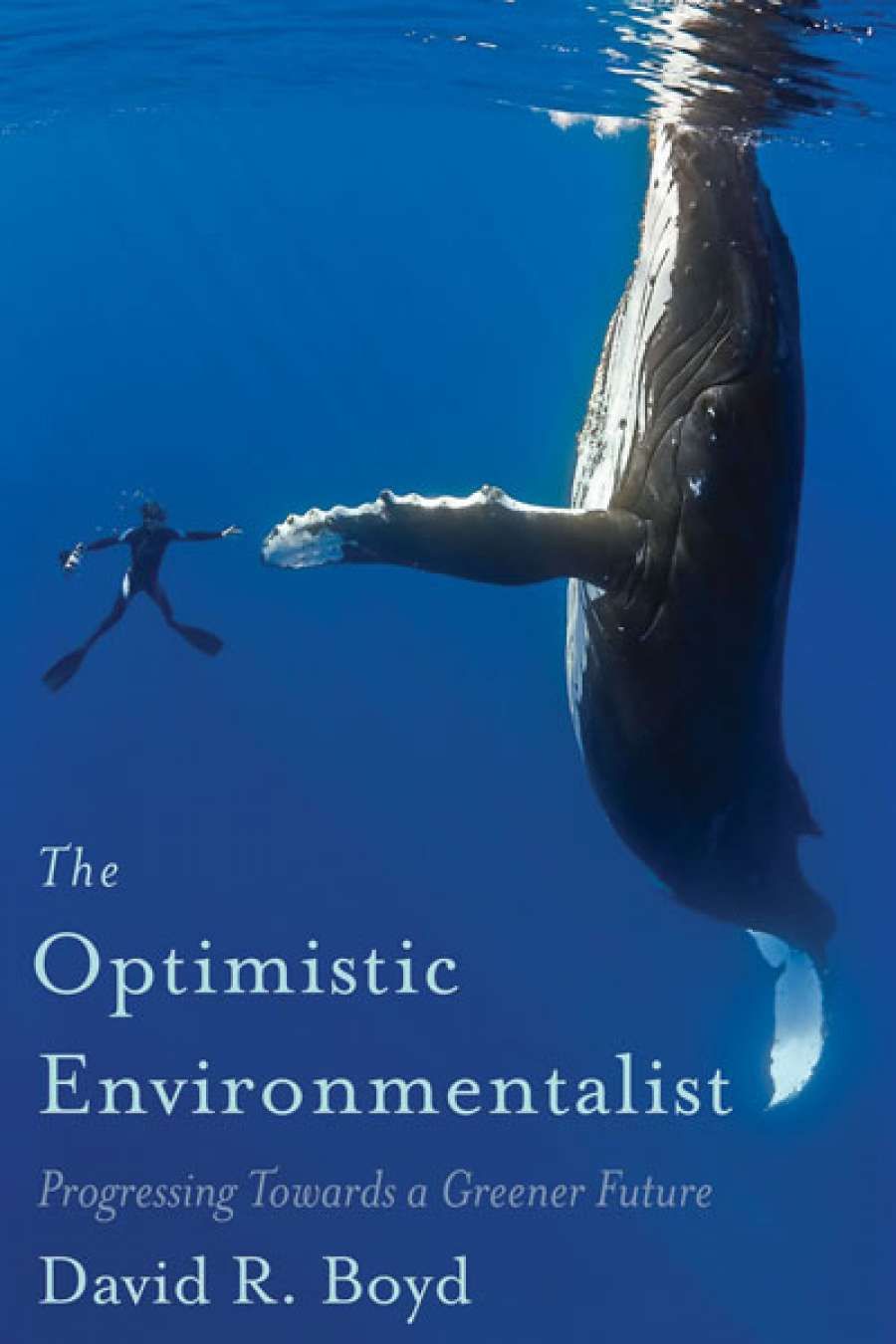
- Free Article: No
- Contents Category: Environmental Studies
- Custom Article Title: Ian Lowe reviews 'The Optimistic Environmentalist' by David R. Boyd
- Book 1 Title: The Optimistic Environmentalist
- Book 1 Subtitle: Progressing Towards a Greener Future
- Book 1 Biblio: ECW Press (NewSouth), $24.99 pb, 244 pp, 9781770412385
David R. Boyd wrote this book when his seven-year-old daughter became aware of the world's converging ecological problems: climate change, loss of biodiversity, the toxic burden of industrial chemicals, the sheer numbers and ever-growing demands of the human population. Wishing to shelter her from the bad news, he looked for evidence of positive changes. He found plenty to cheer in his own region. Living on a small island off the west coast of Canada, Boyd was personally involved in a plan to make Vancouver one of the world's greenest cities. A team, co-chaired by Boyd and the city's mayor, developed two plans. The first was a set of forty-eight short-term actions to be started before Vancouver hosted the 2010 Winter Olympics. The plan was implemented, with ninety per cent of the proposals 'completed or well under way' when the Games began. The second report set out 'a series of ambitious targets, timelines and action in ten key areas': climate change, buildings, transport, waste management, green jobs, air quality, water quality, local food, overall ecological footprint, and access to Nature. Inspired by European examples like Stockholm and Amsterdam, Vancouver has set serious targets to reduce waste going to landfill by forty per cent by 2020 and to have at least half of all urban trips made on foot, by bicycle, or on public transport. The latter goal has already been achieved by concerted policies improving urban density and creating walkable neighbourhoods, making cycling safer and enhancing public transport. I was struck by the contrast with Australian cities, where typically at least three-quarters of urban journeys are made by people driving alone in a car. I chaired a Brisbane City Council working group that prepared a plan for the city to substantially reduce its fuel use and greenhouse gas production, but the then Lord Mayor Campbell Newman embarked on an orgy of building roads, bridges, and tunnels to make the city much less liveable and sustainable. The contrast between Brisbane and Vancouver shows that cities can be made much better or much worse for their citizens, depending on the values and thinking of those in charge.
 David R. Boyd
David R. Boyd
Boyd reviews the changes that were already happening to the world's energy system before the 2015 Paris Agreement. The Canadian province of Ontario has closed down all its coal-fired power stations, replacing them with a mix of wind, solar, and natural gas. This is just a local example of the revolution happening around the world. In each of the last three years, the majority of all the new generating capacity has been renewables. China has reduced its coal burning over the last two years by 250 million tonnes, about the same as Australia's total export production. So the world steaming coal market is over-supplied, prices are falling, and the Australian Coal Association says the majority of export mines are running at a loss. The International Energy Agency (IEA) did not foresee the scale of the changes. It predicted in 2000 that world wind power capacity would reach 30 gigawatts (GW) by 2020, but more than 30 GW has been installed every year since 2009. Where the IEA thought that solar, wave, tidal, and other emerging technologies might together account for 7.6 GW by 2020, solar alone is now contributing more than 150 GW. (Australia's total capacity is about 50 GW.) The IEA now says renewables will supply more power globally than natural gas this year.
Boyd concludes that the environmental problems we face have solutions. However, he is not naïvely optimistic. He notes that continuing population growth and increasing material demands could swamp the progress that has been made. While the billions still living in poverty need to consume more to meet their basic needs, the profligate consumption and growing populations in North America and Australia need to be curbed if we are to have a sustainable future. We need to move on from the toxic meme of growth, to recognise the limits of natural systems and live within those limits. We can still avert disaster. This book shows how forward-looking people are making a difference now. It is also a sobering reminder of the inadequacy of our leaders.


Comments powered by CComment